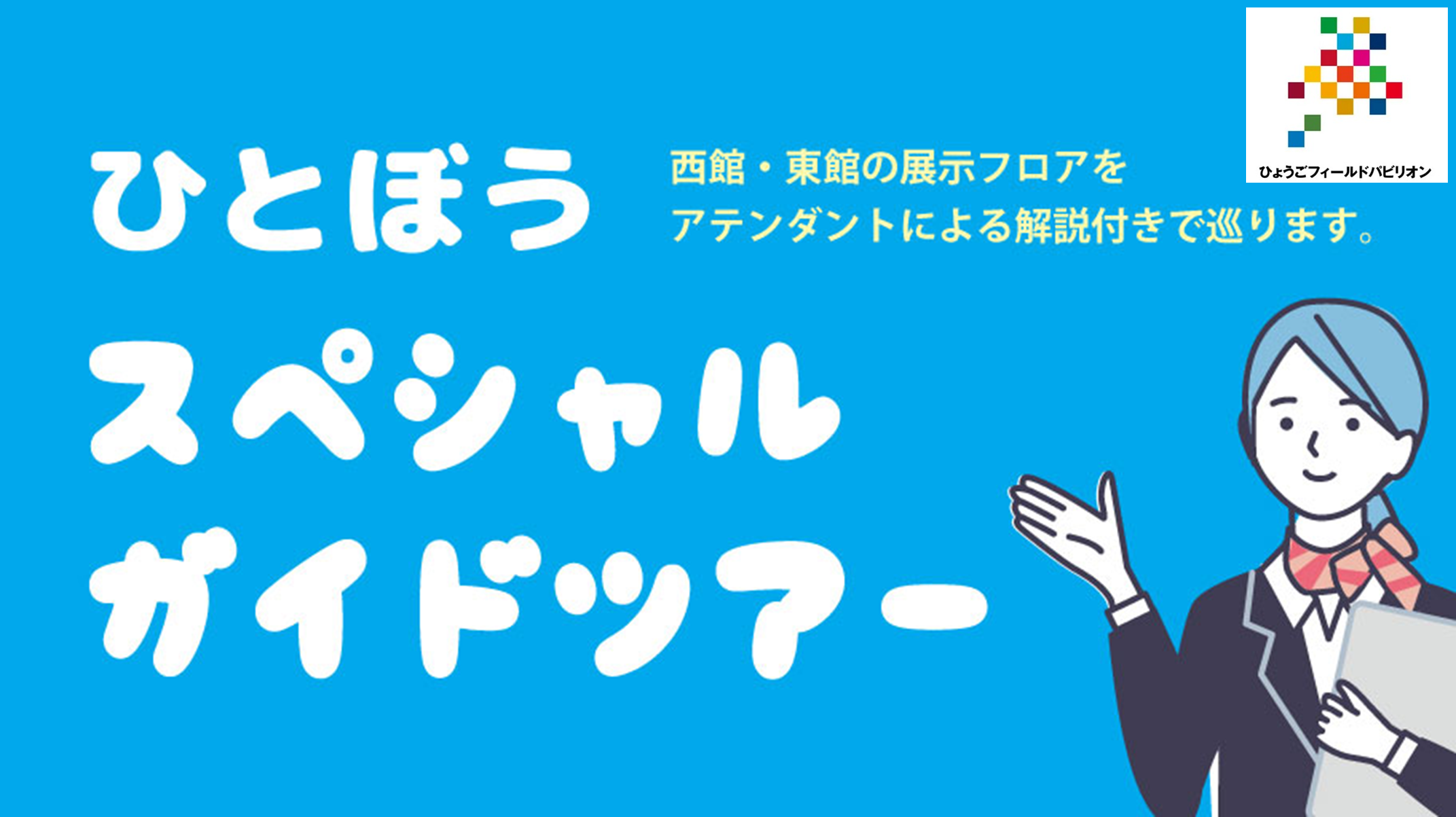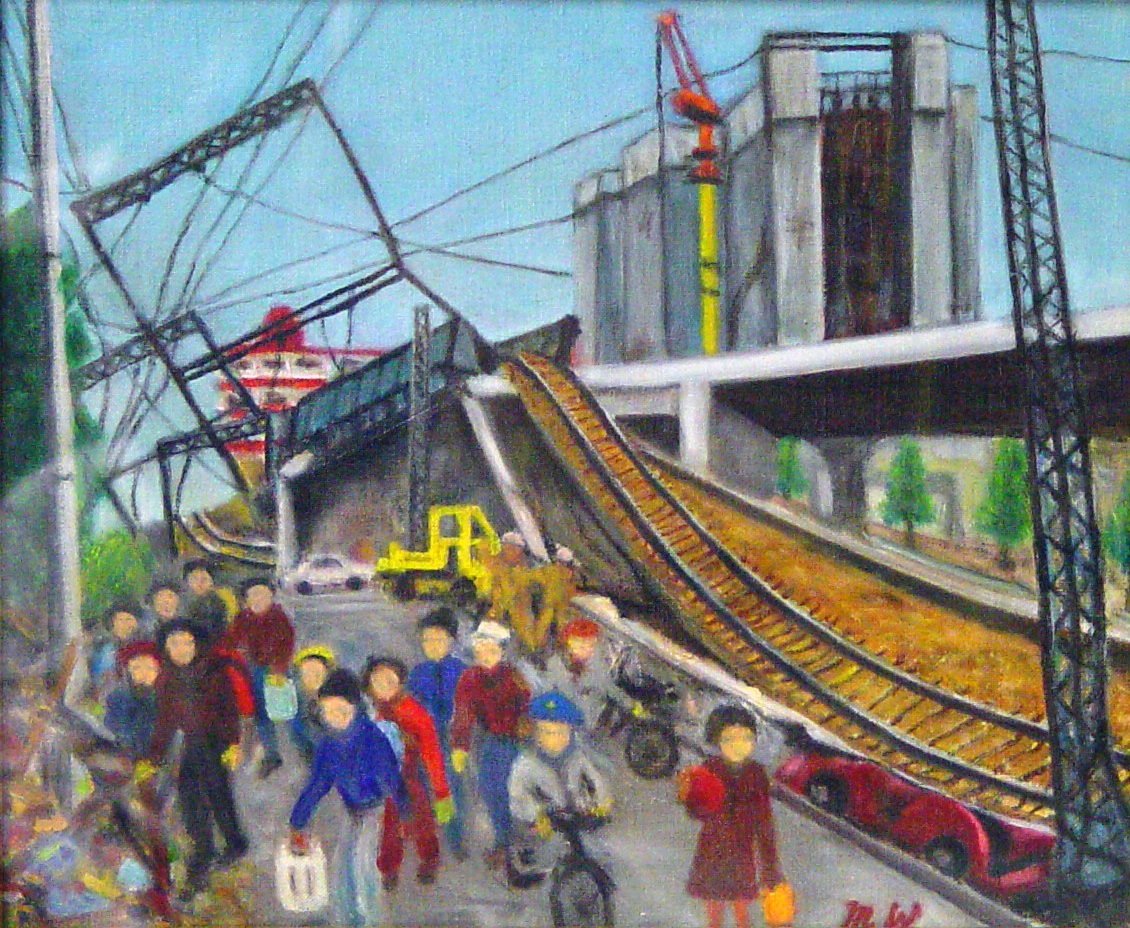アジア太平洋地球変動研究ネットワーク(APN)

アジア太平洋地域における地球変動研究を促進し、地球変動研究への途上国からの参加を増進し、学界と政策決定者との相互作用を強化することを目的とする政府間ネットワークとして、1996年に設立されました。APNでは、共同研究やトレーニング活動の支援、新たな研究プロジェクト形成のためのワークショップの開催、研究者や政策決定者への地球変動に関する情報の普及等の活動を行っています。
アジア防災センター

アジア防災センターは、災害が多発するアジア地域において、国際防災協力を推進する機関として1998年7月に設立されました。31のメンバー国、国連、世界銀行等の国際機関、ASEAN等の地域機関、NGO等と協力を行いつつ、アジアがより安全で安心して快適な生活が営める豊かな地域へと発展することを目指し、防災関連情報の共有化、国からコミュニティレベルまでの防災力の向上、大規模災害発生時に衛星画像の活用等の幅広い活動を実施しています。
神戸地方気象台

大雨や台風、地震や津波、火山噴火などの自然現象を常時監視し、これらの現象に関する情報を発表しています。この情報には、自然災害から国民の生命・財産を守るための防災情報、交通安全を支援する情報、産業情報、生活情報、環境情報などがあります。これらを防災関係機関や地方公共団体、報道機関などに提供することにより、災害による被害の防止・軽減、国民生活の利便性の向上、環境保全に寄与しています。
神戸赤十字病院

神戸赤十字病院は、「医の倫理と人道・博愛の赤十字精神にもとづき、皆様の健康に奉仕する」という基本理念のもと、病院機能としての専門性を重視した高度医療をはじめ、国内の災害救護活動や国際救援活動にも積極的に取り組んでいます。
また、隣接する兵庫県災害医療センターとともに兵庫県基幹災害医療センターに指定されており、兵庫県における災害医療の中核施設です。
国際エメックスセンター

閉鎖性海域とは、周囲を陸地に囲まれた内湾・内海のことで、外海との海水の交換が行われにくいため汚染物質が蓄積しやすく、水質の改善・維持が難しい海域です。この課題解決のため、1990年に第1回世界閉鎖性海域環境保全会議(EMECS会議)が開催され、1994年には閉鎖性海域の環境保全と適正な利用を目指す研究や情報交流のための国際的組織として「国際エメックスセンター」が設立されました。
国際協力機構関西センター(JICA関西)

国際協力機構(JICA)は、「信頼で世界をつなぐ」をビジョンに掲げ、日本のODA(政府開発援助)実施機関として、開発途上国への国際協力を行っています。JICA関西では、「私たちJICA関西は、途上国と関西を信頼でつなぎ、ともに『持続可能な開発目標(SDGs)』の達成に貢献します」をミッション・ステートメントとし、防災をはじめとする関西圏の多彩なリソースを生かした研修事業や民間企業の途上国への海外展開支援、市民参加協力事業など、地域と途上国を元気にする国際協力を推進しています。
国際復興支援プラットフォーム(IRP)

国際復興支援プラットフォーム(IRP: International Recovery Platform)は、2005年に第2回国連防災世界会議が兵庫県神戸市で開催された後、災害後の復旧・復興過程で経験したギャップや課題に取り組むとともに、兵庫行動枠組2005-2015の実施を支援することを目的に設立されました。設立後10年にわたって優良復興事例の知識に関する情報源として国際的な役割を果たしてきましたが、仙台防災枠組2015-2030の採択を受けて、「Build Back Better(より良い復興)」に関する経験と教訓を共有するための国際的なメカニズムとしての役割により重点を置いた活動を推進します。
国連防災機関(UNDRR)

国連防災機関(UNDRR)はジュネーブを本部として2000年に発足しました。持続可能な開発に不可欠な要素としての防災の重要性を高め、災害による被害・損失の減少、災害リスクの軽減を目指し、災害に強い国やコミュニティの構築を目的としています。UNDRRは国連組織の防災担当部局として、国際防災協力の枠組み構築、調整のための触媒的役割を果たすと共に、各国の防災政策実施を支援し、多くのパートナーと共に防災に関する国際的な指針の実施推進を行っています。2005年から2015年の10年間の国際的な防災指針は「兵庫行動枠組(HFA)」であり、現在はその後継となる「仙台防災枠組2015-2030」の実施推進、進捗状況モニタリング及び報告などを行っています。UNDRR神戸事務所は2007年10月に開設。
国連人道問題調整事務所(OCHA)神戸事務所

国連人道問題調整事務所(OCHA)は、人道危機にさらされた人びとの命を救い、保護するために、国際的な人道支援活動を調整しています。すべての人が、すべての人のために、効果的で、人道支援の基本原則に則った活動を行うことを推進しています。神戸事務所は2002年に設立。日本政府や国内外の人道支援団体との連携強化に取り組んでいます。
世界保健機関健康開発総合研究センター(WHO神戸センター)

WHO神戸センターは21世紀の健康課題に対応する学際研究機関として1995年に神戸に設立。以来、国の内外の政府機関や研究機関、NGOなどとのグローバル・ネットワークを構築し、研究に取り組んでいます。地球規模で都市化や高齢化、気候変動が健康に大きな影響を与える中、「ユニバーサル・ヘルス・カバレッジ(UHC)」「高齢化」「イノベーション」「健康危機管理」についての研究を進め、健康格差の是正、健康の社会的決定要因の特定、他部門連携事業を促進しています。
地球環境戦略研究機関(IGES)関西研究センター

兵庫県および関西の企業、団体等の協力を得て、2001年に開設されました。「ビジネスと環境」をテーマとして、関西の学術研究機関や企業、団体ならびにアジア太平洋地域をはじめとする内外の研究機関と連携した、調査研究、政策提言や普及活動を行なっています。
日本赤十字社兵庫県支部

わたしたちは、苦しんでいる人を救いたいという思いを終結し、いかなる状況下でも、人間のいのちと健康、尊厳を守ります。日本赤十字社は、世界に広がる赤十字のネットワークを生かし、紛争や災害、病気などで苦しんでいる人々に救援の手を差し伸べています。一方、国内でも、災害救護活動、救急法等の講習、医療事業、血液事業、看護師等養成、青少年赤十字、社会福祉、赤十字ボランティア活動を展開しています。これらの活動は、多くの皆様のご支援、ご協力を得て行なわれています。
人と防災未来センター

阪神・淡路大震災の経験と教訓を後世に継承するとともに、その経験と教訓を生かし、防災に関する知識及び技術の普及を図ることにより、地震等の災害による被害の軽減に貢献するため2002年に開設されました。
兵庫県国際交流協会

多文化共生の社会づくりと県民主体の国際交流活動を促進するとともに、世界の人々とともに生きる国際性豊かな社会の創造に寄与することを目的として、平成2(1990)年に設立され、「多文化共生社会の実現」、「交流人口の拡大」、「人づくりへの貢献」を三つの柱として事業を展開しています。また、大規模災害時には外国人も被災者となることから、外国人県民への防災啓発、避難所での外国人対応の促進、災害・緊急情報の多言語発信体制の構築等、災害時の外国人支援に取り組んでいます。
兵庫県こころのケアセンター

災害や事件、事故、犯罪被害、虐待なの様々な状況で「こころのケア」が求められています。兵庫県では1995年の阪神・淡路大震災を契機として、被災者や被害者のトラウマ(心的外傷)や、その結果として生ずるPTSD(心的外傷後ストレス障害)などの「こころのケア」に取り組んできました。兵庫県こころのケアセンターは、研究機能を始め、研修や情報発信・普及啓発、連携・交流、相談・診療といった「こころのケア」に関する多様な機能を有する全国初の拠点施設です。
兵庫県災害医療センター

兵庫県災害医療センターは、震災の教訓を踏まえた兵庫県災害救急医療システムの中核施設であり、自治体が設立する初めての災害医療センターです。当センターは、救命救急センターと情報指令センター等の機能を有しており、診療の早期開始を目的としたドクターカーの活用や災害時における救急医療情報収集・提供を行います。また、日本DMAT研修をはじめ、基幹災害拠点病院として、医療従事者の教育研修など人材の養成、情報収集・発信等を行います。
兵庫県立大学大学院 減災復興政策研究科

阪神・淡路大震災の経験と教訓、20年以上に及ぶ復興の知見、さらには東日本大震災の課題を踏まえ、2017年に開設。兵庫ならではの特色を生かした実践的な教育・研究を実施することにより、減災復興政策を担う専門性の高い人材育成に取り組んでいます。
兵庫県立大学 防災教育研究センター

防災マインドを持ち地域や社会に貢献できる人材育成を目指し2011年に開設。学部生を対象に減災や復興に関する知識を深め、実践的な対応力を身に付ける防災教育を推進しています。
ひょうご震災記念21世紀研究機構

阪神・淡路大震災の復興過程の総括検証を踏まえ、大震災が提示した近代文明の課題である「安全安心なまちづくり」と「共生社会の実現」を研究分野に、成熟社会における様々な課題について、価値判断や具体的な実現方策にまで踏み込んだ政策提言を行うとともに、震災の経験と教訓の発信をはじめ、多くの研究者、行政機関や研究機関との知的交流、人材育成などの諸事業を展開しています。
兵庫耐震工学研究センター

兵庫耐震工学研究センターは、国立研究開発法人防災科学技術研究所(本所:つくば市)の研究組織として、2004年10月に開設されました。本センターは、地震防災に関する広範な技術開発に対し「究極の検証手段」を提供する世界最大の実大三次元震動破壊実験施設(E-ディフェンス)の管理運営と共に、ここで産み出される成果の防災実践への速やかな移行を飛躍的に促進するため、E-ディフェンスを用いた実験研究を遂行しています。
Asian Disaster Reduction Center

The Asian Disaster Reduction Center (ADRC) was established in July 1998 with a mandate to facilitate multinational cooperation for disaster reduction in the Asian region. Collaborating with 31 member countries, international organizations such as UN and the World Bank, regional organizations such as ASEAN and INGOs, the ADRC has been conducting activities, including sharing of disaster related information, strengthening disaster management capacity from national to community levels and the use of satellite imagery in case of a large scale disaster, in pursuing safer and securer lives in Asia.
Asia-Pacific Network for Global Change Research

The Asia-Pacific Network for Global Change Research (APN) is an inter-governmental network whose mission is to foster global change research in the Asia-Pacific region, increase developing country participation in that research, and strengthen interactions between the science community and policy makers. In order to achieve its goals the APN conducts a number of different activities that include supporting collaborative research and training activities; organizing scoping workshops to develop new research projects; disseminating global change information to scientists and policy makers; and providing opportunities for scientists and policy makers to discuss regional research priorities and other global change issues.
Disaster Reduction and Human Renovation Institution

DRI was established in order to pass on the experiences and lessons learned from the Great Hanshin-Awaji Earthquake to the future, thus contributing to develop a resilient society.
Graduate School of Disaster Resilience and Governance, University of Hyogo

Established in 2017 to draw on the experience and lessons of the 1995 Great Hanshin Earthquake after two decades of recovery and reconstruction, and address issues arising from the 2011 Tohoku earthquake and tsunami. Practical education and research are conducted in a distinctive Hyogo Prefecture style, to train specialists capable of leading programs in disaster resilience and governance.
Education and Research Center for Disaster Reduction (ERCDR), University of Hyogo

Established in 2011 to provide undergraduates with comprehensive understanding of disasters, as a basis for community or national service. Students obtain in-depth knowledge about disasters as well as recovery and reconstruction, and learn about practical preparedness through the Disaster Prevention Education.
Hyogo Earthquake Engineering Research Center

The Hyogo Earthquake Engineering Research Center was established on October, 2004, to manage research projects using the 3-D full-scale earthquake testing facility (E-Defense) and to operate and maintain the facility. E-Defense has the unique capacity to experiment with life-size buildings and infrastructural systems in real earthquake conditions, and stands as a tool of ultimate verification. With this feature, E-Defense should help expedite the transfer of various research outputs into the practice of earthquake disaster mitigation.
Hyogo Earthquake Memorial 21th Century Research Institute

Through the experiences of the Great Hanshin-Awaji Earthquake, we research “development of a safe and secure community” and “creation of the convivial society” : the subjects of the modern civilization. And we perform the policy proposal about the value judgment or the realization policy about various subjects in mature society, and we develop many projects such as ①communicating our earthquake experiences and lessons learned to the people around the world, ②intellectual exchange of the researcher, governmental agency and research institution, and ③personal training.
Hyogo Emergency Medical Center

Hyogo Emergency Medical Center was developed based on the lessons learned from the Great Hanshin-Awaji earthquake, which claimed more than 6,000 lives of the people in 1995. This was established as the core facility of the Disaster Emergency Medical System of Hyogo Prefecture, and is the first of its kind founded by a municipality in Japan. This Medical Center provides life-saving emergency medical care as a Critical Care Medical Center and also works as an information center of emergency and disaster medical care. In addition, this center provides training programs on disaster management for disaster medical coordinators, Japan DMATs(Disaster Medical Assistance Teams),doctors, nurses, EMTs, pharmacists and other medical personnel.
Hyogo Institute for Traumatic Stress

In a present society where events such as disasters, accidents, crimes, child abuse take place,‘mental health care’for traumatized people has been called for by the public. Since the Great Hanshin-Awaji Earthquake in 1995, Hyogo prefecture has been addressing issues with regard to trauma and PTSD among victims of disasters and crimes.For these reasons, Hyogo Institute for Traumatic Stress was established. It is the first research institute for traumatic stress in Japan which has various functions; research, training, information provision/public education, liaison/networking, consulting and counseling.
International EMECS Center

Enclosed coastal seas such as bays and inland seas are difficult places to preserve and improve water quality because pollutants tend to accumulate easily due to poor exchange of water with open seas. In 1990 the first International Conference on the Environmental Management of Enclosed Coastal Seas (EMECS ’90) was held in Kobe, Japan to resolve these issues. In 1994, the International EMECS Center was established as an international organization for research and information exchange aimed at the preservation and appropriate utilization of the environments of enclosed coastal seas throughout the world.
Institute for Global Environmental Strategies

With“Business and Environment”as the theme of its research, IGES Kansai Research Center develops innovative policy instruments for the realization of sustainable development in the Asia-Pacific region, and conducts strategic and practical research into formulating environmental strategies. As an IGES center for activities in the Kansai region(the area which includes Kobe, Osaka and Kyoto), IGES Kansai Research Center conducts research, cooperating with universities, reseach institutes, private companies and environment-related organizations in the region.
International Recovery Platform (IRP)

The International Recovery Platform (IRP) was established following the Second UN World Conference on Disaster Reduction in Kobe, Hyogo, Japan in 2005 to support the implementation of the Hyogo Framework for Action (HFA) with the role of addressing the gaps and constraints experienced in the context of post-disaster recovery. After a decade of functioning as an international source of knowledge on good recovery practice, IRP, following the adoption of the Sendai Framework for Disaster Risk Reduction 2015-2030, embraced a more specialized role as an international mechanism for sharing experience and lessons associated with build back better.
Japan International Cooperation Agency Kansai Center (JICA Kansai)

JICA assists and supports developing countries as the executing agency of ODA (Official Development Assistance) in accordance with its vision of “Leading the World with Trust”. JICA Kansai, based on the mission statement of “We, JICA Kansai, wish to connect Kansai region to developing countries with a spirit of trust and contribute to the achievement of SDGs“, promotes international cooperation through Knowledge Co-Creation Programs together with various stakeholders in Kansai region in many fields including DRR. For that purpose, JICA Kansai also supports for private enterprises to extend their business to developing countries and conducts Partnership Programs with citizens, etc.
Japanese Red Cross Hyogo Chapter

The Japanese Red Cross Society was formed out of the desire to aid those people who are suffering, and we safeguard the life, health, and dignity of all. We utilize the worldwide Red Cross network to lend a supportive hand to those suffering from conflicts, disasters, and diseases. In Japan, the Red Cross conducts disaster relief, provides instruction in first aid courses and related topics, conducts blood programme and other medical services, trains nurses and other medical personnel, and is involved in the Junior Red Cross, social welfare, and Red Cross volunteer activities. These activities are made possible with your support and cooperation.
Japanese Red Cross Kobe Hospital

Japanese Red Cross Kobe Hospital aims to provide medical service for everyone’s health,based on medical ethics and the spirits of humanitarianism and charity.Under this basic principle,we are actively engaged in offering advanced
medical treatment emphasizing expertise as a hospital function; we also conducting relief activities in the aftermath of disasters in Japan and overseas. We are designated a core disaster medical center in Hyogo Prefecture, along with the Hyogo Emergency Medical Center
adjacent to our hospital, and play a central role in disaster medical care in Hyogo Prefecture.
Kobe Local Meteorological Office

Kobe Local Meteorological Office, constantly monitoring natural phenomena such as heavy rains, typhoons, earthquakes, tsunamis, and volcanic eruptions, announces information on these phenomena. These information include disaster reduction information to protect the people’s lives and property from natural disasters, information to support traffic safety, industry information, life information, environmental information and so on. By providing these information to disaster prevention related organizations, local public organizations, and the press, we contribute to the prevention and mitigation, improvement in the convenience of people’s life, and environmental preservation.
The United Nations Office for Disaster Risk Reduction (UNDRR) Kobe Office

The United Nations Office for Disaster Risk Reduction (UNDRR) was established in 2000 (Headquarters is in Geneva). The main aims of the organization are to achieve a substantial reduction of disaster losses and to build resilient communities and nations as an essential condition for sustainable development. UNDRR serves as catalyst and focal point in coordinating international efforts in Disaster Risk Reduction (DRR) and developing international frameworks for DRR. In cooperation with many partners, UNDRR promotes mainstreaming of DRR and building resilience against disasters and supports the implementation and follow-up of the Sendai Framework for Disaster Risk Reduction 2015-2030, which was adopted by the Third UN World Conference on Disaster Risk Reduction as the successor of the Hyogo Framework for Action 2005-2015. The UNDRR Kobe Office was established in October 2007.
United Nations Office for the Coordination of Humanitarian Affairs (OCHA) Kobe Office

OCHA coordinates the global emergency response to save lives and protect people in humanitarian crises. We advocate for effective and principled humanitarian action by all, for all. Established in 2002, Kobe Office strengthens collaboration with Japanese Government and humanitarian partners in the country and the region.
World Health Organization Centre for Health Development
(WHO Kobe Centre)

The World Health Organization (WHO) Centre for Health Development, created in 1995, is a global and interdisciplinary research centre that addresses major challenges to health and development in the 21st Century. Its major role is to develop and coordinate international and local collaborative research, to nurture partnerships and global networks with government, academic, and nongovernmental institutions, and exchange of lessons. Urbanization, rapid population ageing, and climate change are among the key drivers of health outcomes worldwide. The Centre’s research currently promotes implementation of universal health coverage, innovation and ageing, as well as for specific issues related to disaster risk management. The Centre focuses on reducing health inequalities, the social determinants of health, and intersectoral action.








